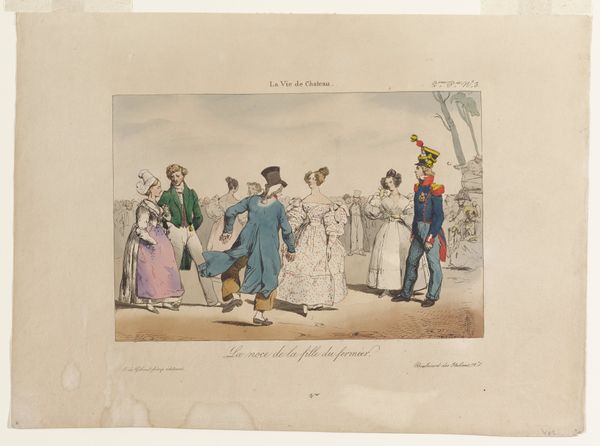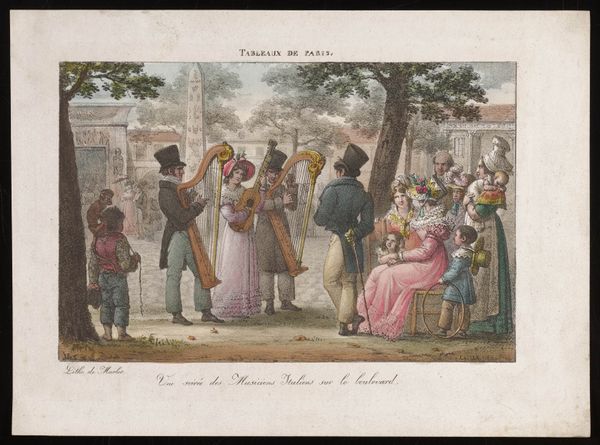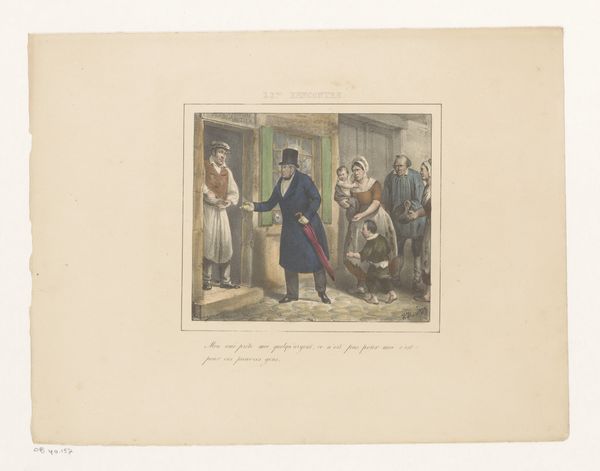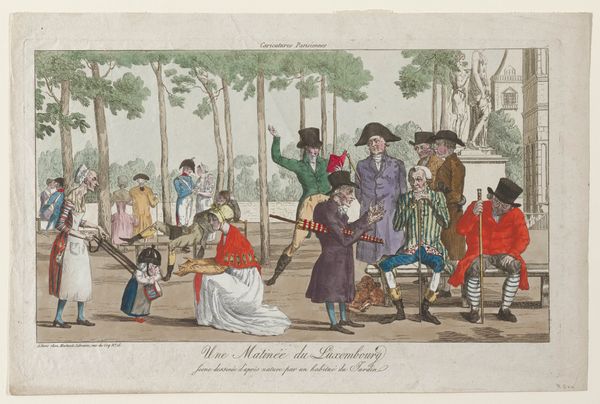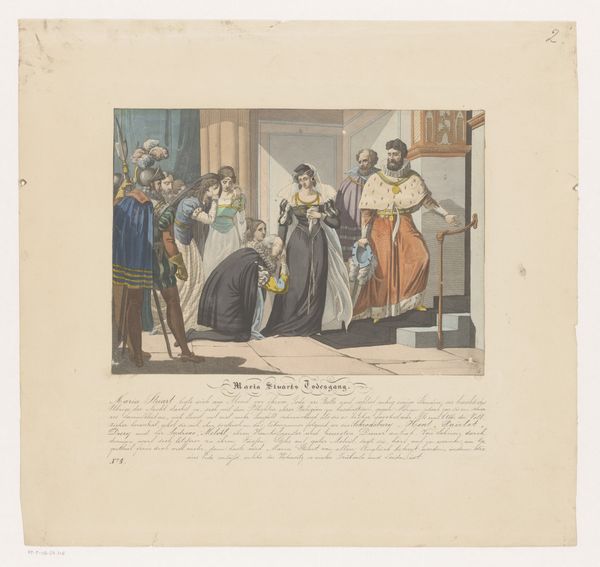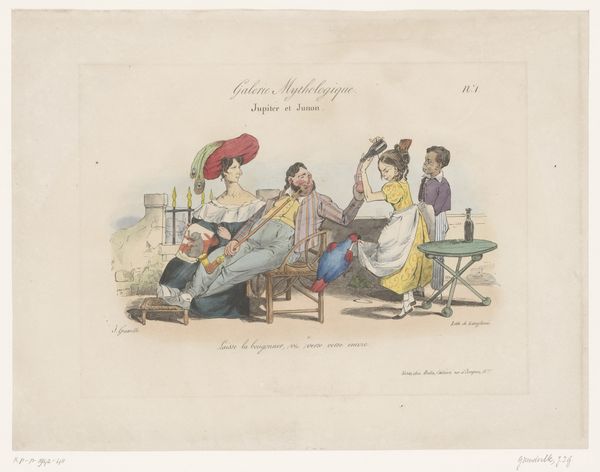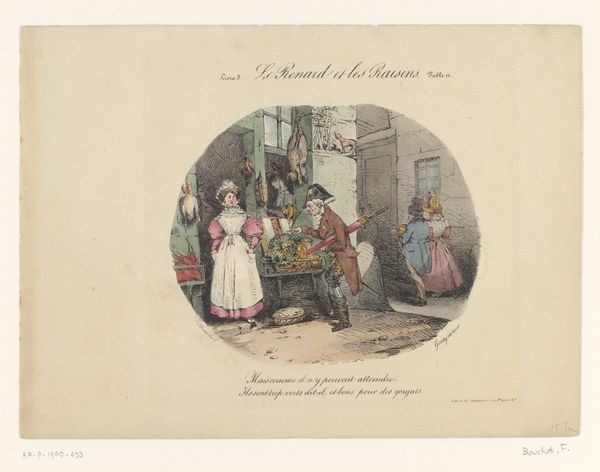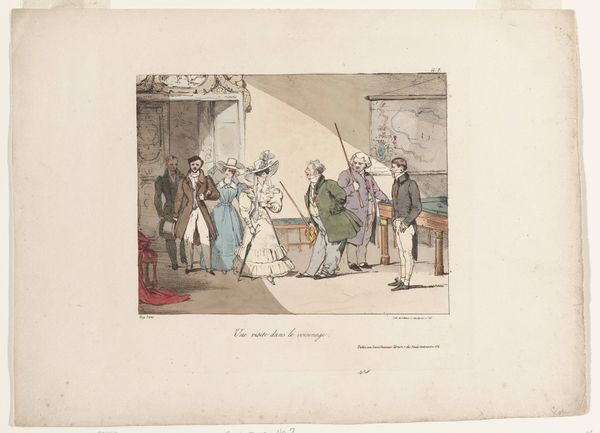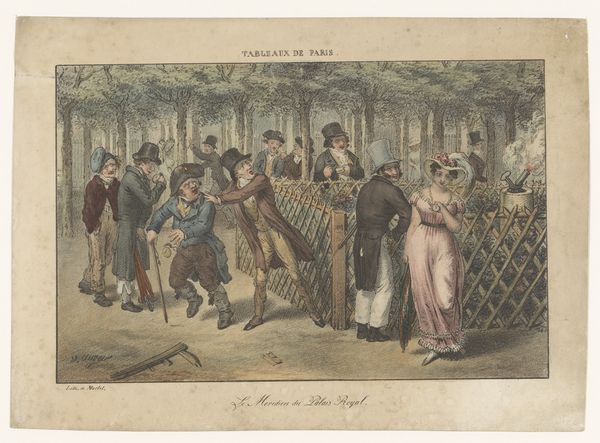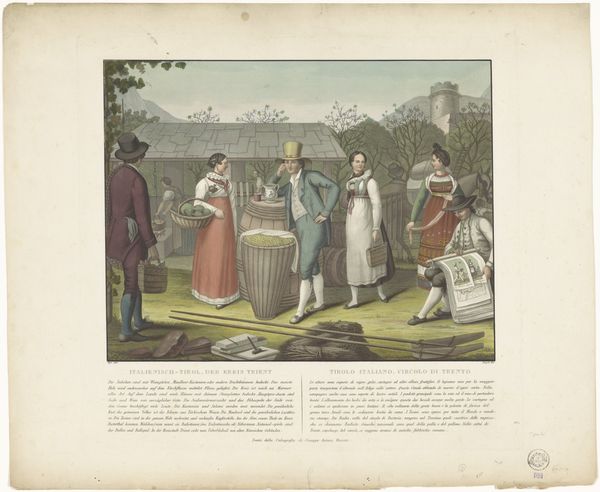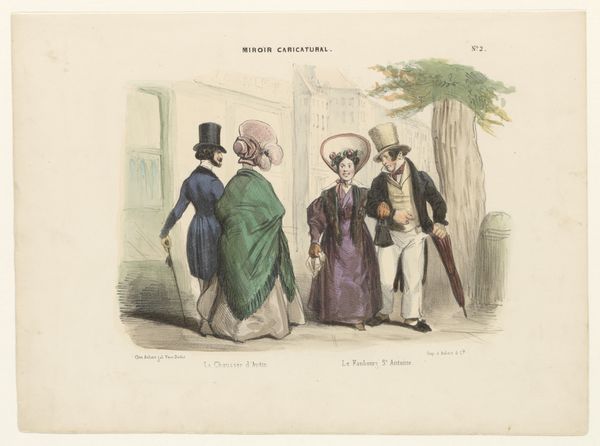
Caricature. No. 7. 2eme Partie. Les manie de la Truelle. 1832
0:00
0:00
lithograph, print
#
narrative-art
#
lithograph
# print
#
caricature
#
figuration
#
romanticism
#
genre-painting
#
watercolor
Dimensions: 7 3/8 x 10 in. (18.73 x 25.4 cm) (image)
Copyright: Public Domain
Curator: Here we have a lithograph by Eugène-Louis Lami from 1832, titled "Caricature. No. 7. 2eme Partie. Les manie de la Truelle.” It depicts a group of elegantly dressed individuals observing construction. What’s your immediate take? Editor: It feels like a snapshot of privileged indifference. All this finery overlooking what looks like very hard labour and potential disaster in that crumbling building. There is something very uneasy here for me. Curator: That contrast is precisely the point. Lami created this as part of a series, using caricature to critique the bourgeoisie during the July Monarchy in France. We're seeing a commentary on their fascination – or perhaps obsession – with building and construction projects, particularly from their positions of social elevation, both literal and figurative. Editor: Absolutely. And “truelle” in the title translates to "trowel", connecting the scene directly to the act of building, a visual manifestation of progress, but only on the surface. It feels deeply ironic. Are they participating or just consuming the spectacle? How complicit are these wealthy onlookers in this development? Curator: The Romanticism style is very prevalent at the time, particularly as the style intersects with social critique. Lami, however, trains his observant eye towards the wealthy elite. The figures almost blend into this carefully rendered scene, not really a part of it. Note how the sharp architectural line stands out, it dissects the land and almost pierces through our elegant idyll, while men labor near falling building fragments below, unnoticed. Editor: Yes! The architectural plans are central, even physically closer to us. There is very little human connection in this tableau. The women’s bodies are all exaggerated round forms; the child seems like a miniature doll dressed like an adult. It reinforces the emptiness and absurdity of their existence, the disconnect with anything substantial. They are like props in their own spectacle of wealth. Curator: It's a biting satire, capturing a particular moment in Parisian society where appearances and social climbing masked deeper inequalities. By employing Romantic conventions to showcase such a stark depiction, he effectively skewers the pretentions of the ruling class. Editor: A vital reminder that art can be a sharp tool to expose the uncomfortable truths about power and social disparities, using aesthetics to highlight the absence of ethics. It invites reflection of class and human interaction as a central focus. Curator: Indeed, a fascinating look at a pivotal historical juncture, rendered with keen observation and no small measure of irony.
Comments
No comments
Be the first to comment and join the conversation on the ultimate creative platform.
